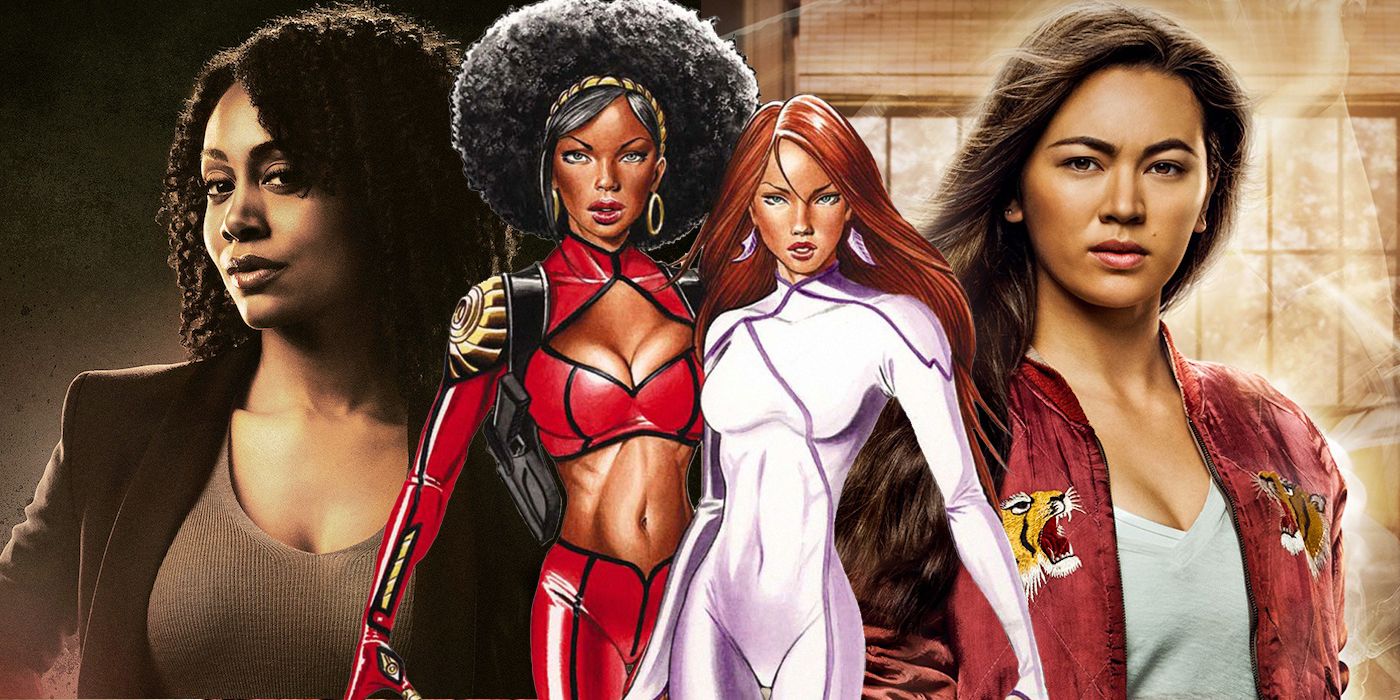I find myself starting Iron Fist again and I don't know why. Season one was awful and from the first few scenes of this season, it is not clear that Marvel learned their lesson. How do I know this? Well there's a yin/yang sign on a shipping truck and all I can think is, “this is what you thought of? This is what you want me to get from Iron Fist?” and then I started laughing because of course this is how Iron Fist would open, with a ham-fisted attempt to wallop us with attempts at “relevant” symbolism...
But why? Why am I still watching? Well, I can't quit Iron Fist because it leaves me with so many questions and the feeling that Marvel is in fact, trying to phone it in. There's just too much work going into making martial arts, dragons, and magic boring and I am obsessed with all the ways it could be better. My notes on the episodes are full of unanswered questions regarding design, imagery, acting, writing, casting, and basically every part of the show that it makes me wonder where they put the money to make it. It’s my Pepe Silvia.
Specifically, most of these phone-it-ins have to do with character motivation throughout the series. While Sacha Dhawan (Davos) and Jessica Stroup (Joy Meachum) do great jobs with what is written, I wonder about the directors asking them "what's your character's motivation" and them looking at each other with blank stares because the writing gives no cues. No matter how many times Joy says "You kept my father from me" or Davos says "There's a cancer in this city" I don't see how their actions follow. Why does Davos care about crime in New York? He has no tie to the city or any nation state, having grown up in K’un L’un, so why start there? If he really cared he should be punching senators in Washington, DC or going to the sources of crime not beating up or murdering petty criminals. Joy's motivation feels more warranted, the idea that her dead father was hidden from her by Ward. She and Ward have some great conversations about it (they're well acted in spite of the writing in most cases) but the actions feel disproportionate. Why would Joy have Danny kneecapped rather than go to therapy when she never had an inclination towards trademark villain behaviors? Therapy is cheaper (even Ward’s trying it) and would give her more resolution in the long run. The best I can say is at least they made Joy less forgettable than last season.
The one shining beacon in this season has been Misty Knight, riding in on a gallant steed of reasonable questions, solid acting, and good chemistry. Misty's great with all the characters, even having some chemistry with a more memorable Ward Meachum, and they teased us with a Daughters of the Dragon duo. While that possibility is fantastic, I’m not sure how I feel about Jessica Henwick’s Colleen. I can’t tell if its her acting or the writing but her character's actions feel haphazard and just...off. Nearing the end of the season Colleen acts resigned but with no preceding steps towards that feeling. This "off" feeling particularly comes through in the fight scenes where in one, Colleen seems to have forgotten all her empty hand techniques and in the next, she's creaming three enemies at once. These made it hard to feel that Misty and Colleen could actually be good partners. One is a well-written clearly compiled character with defined skills, the other is a mish-mash roller coaster of character choices and it’s unclear what she’s actually capable of and not in a good way.
Overall, Season 2 is better, but to say that is like saying it only forgot to add 4 of the ingredients instead of 5 for the dish that is Iron Fist. The bar was so low that yes, they raised it, but it's not a bar I'd be proud of getting over. There are a lot of ideas in the series but if we have a season three I hope they take a step back to think about what they've done. Marvel's delivered us a horribly bland white savior character, centered a bunch of white folks, and then doubled down on it. What sort of message does that send and is that what they want to send, especially now? In a year like this one, with Crazy Rich Asians killing it at the box office and Asian Marvel characters like Jimmy Woo (Randall Park) stealing the show in Ant-man and The Wasp, why continue a mediocre trajectory?





